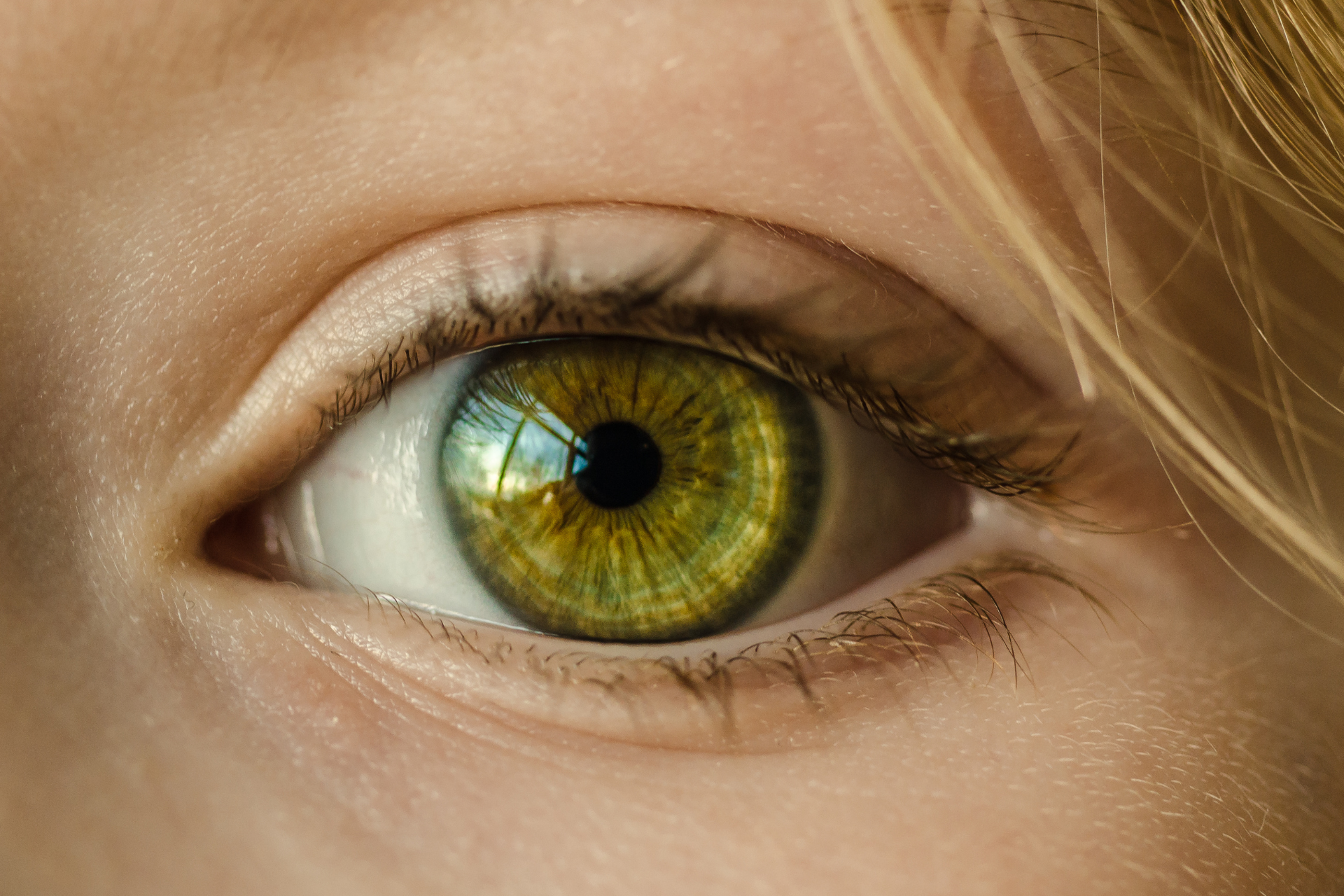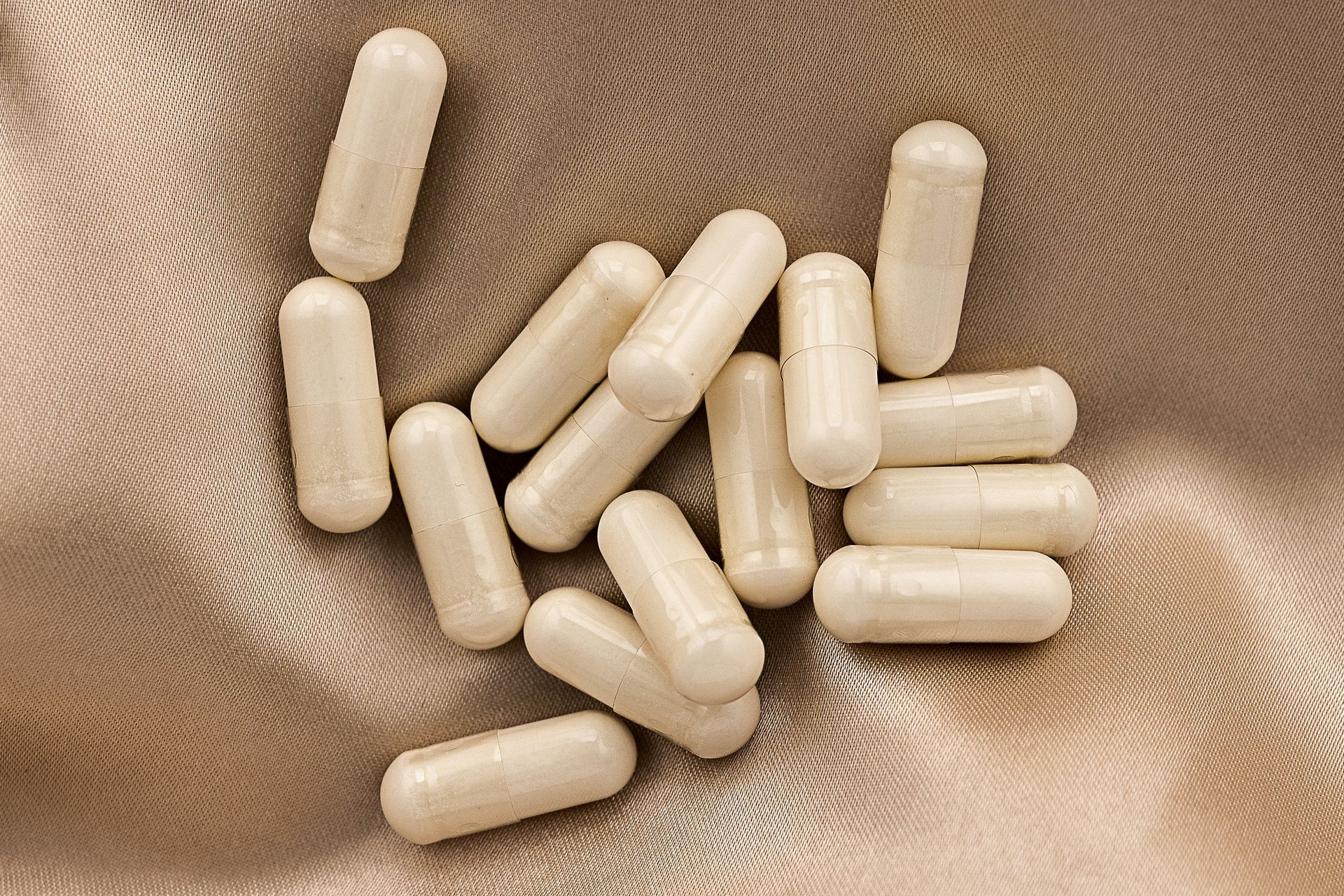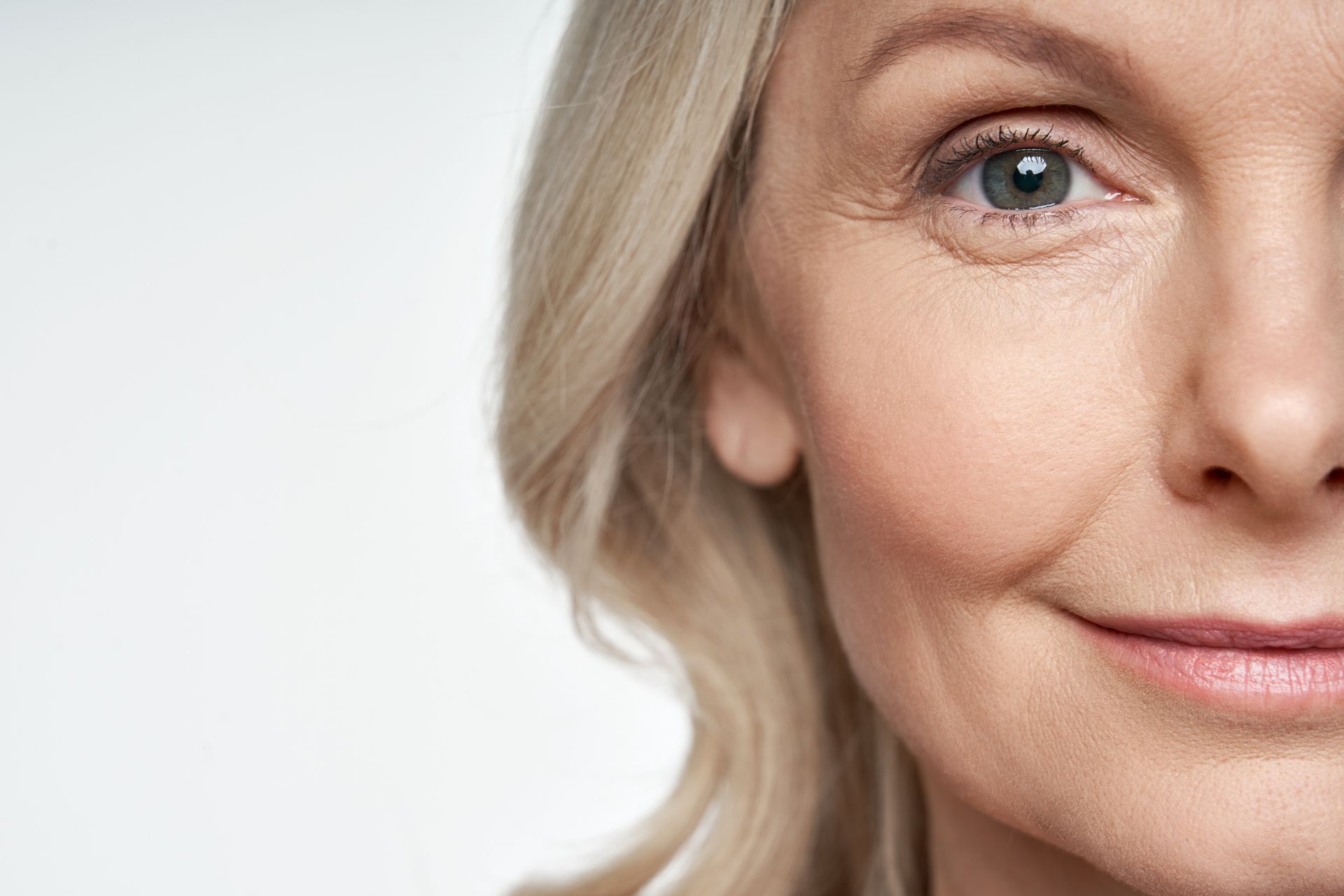Texas Resident Finds Macular Degeneration Treatment
Ruth Ledbetter says acupuncture saved her sight
Says she found treatment for macular degeneration that saved her sight
The quality of Ruth Ledbetter’s custom draperies is so well known by interior decorators that she has become legendary. But in 2002, her Joshua, Texas drapery shop became silent.
Her vision had deteriorated so badly that she could no longer thread her sewing machine needle.
She went quickly to her ophthalmologist.
She explained, “He diagnosed me with macular degeneration and referred me to a retinal specialist. The specialist gave me tests that cost $600 and then said, ’You have macular degeneration. I’m sorry, but there’s nothing that can be done for you.’
“I knew what I had. I could’ve used that $600.”
Her story today is how she found a treatment that significantly improved her vision. It involved a gamble and a trip to the Ouachita Mountains of Arkansas.
But first, it helps to understand Ruth Ledbetter’s disability.
In Country Living ’s “Healthy Living,” macular degeneration is explained: “The retina is located inside the back surface of the eyeball and contains millions of light-sensitive cells, called rods and cones. Directly opposite the lens and at the central portion of the retina is the macula—sort of the capital city of the eye, since it contains the densest population of cones, the cells that enable us to see fine detail and color.
“In AMD (age-related macular degeneration), the light-sensing cells of the macula gradually stop functioning. The destruction is painless, and it’s not until patients begin to experience symptoms—blurred words, distorted lines, and empty areas in the center of an image, like the letters ‘to’ missing on a stop sign—that they’re diagnosed.
“Anywhere from 70 to 90 percent of patients experience dry macular degeneration, a thinning of the macula or the development of yellow spots of fatty deposits on the area. About 10 to 30 percent are affected with wet degeneration, so named because blood vessels underlying the macula begin to leak, eventually killing off the cone cells. Because the bleeding can eventually form scar tissue, wet macular degeneration is often more difficult to treat.”
As Ruth and I walked back to her drapery workroom behind her home, she moved about like a young woman. She’s 84.
She was straight to the point, pleasant and self-assured. I saw a plaque, naming her the Cleburne Area Business and Professional Women’s Club Woman of the Year for 2002-2003. I learned that she takes an aerobics class three mornings a week, is the Grand Mom of a Red Hat Society and is an avid organic gardener.
She holds the patent on an invention that she regularly uses in her work, and she and Drew Jefferson Ledbetter just celebrated 70 years of marriage.
All her life Ruth has listened to others’ opinions and ideas—and then accepted or rejected them. She once worked for a drapery company where she watched a young woman agonize over the measuring process for placing pleats in draperies. She asked her why she did it like she did and received a defensive answer.
“I knew there was bound to be an easier way to do what she was doing. I came up with my own drapery tool and a measurement table that can do in five minutes what it took her half a day to do. There may be better ways to do things. You have to look for them.”
When she was told there was nothing that could be done for her eyesight, she told herself she would explore every possible option first.
She said, “My friend, Effie Smith Davis, worked with Donald Armour at Johns-Manville in Cleburne. His wife had taken acupuncture for macular degeneration from a center in Hot Springs Village, Arkansas, and it had done wonders for her eyesight. Effie got the telephone number and information about the macular degeneration treatments for me.
“When I looked right at someone’s face I could see only a black blob. My peripheral vision was fine. My vision had gradually gotten so much worse, but I was so busy that I wasn’t really aware of it—-because my other eye wasn’t that bad. One day I was heartsick when I couldn’t see to thread the needle of my machine. I knew I had to do something.
“I called the Arkansas Acupuncture Center, made an appointment, and my daughter-in-law drove me there. The acupuncture treatments for me lasted two weeks the first time I went. I’ve gone back two times in 2003 and two times this year for 5 days each. I’ll go back again in November.”
She leaned forward and smiled as she added, “I was so excited when I came home that I told everybody I knew! I could thread my needle again. My television was in color! When I looked at people, the black blob was gone. It’s not real focused in that spot, but I can see faces again.”
She was attending church in Burleson at the time she returned from her first acupuncture treatment. The words to hymns were shown up on a screen. Still excited from her improvement, she glanced up, and became horror stricken.
“I thought I was so much better, but I looked up there and I couldn’t read a word. I almost panicked. Then I took my glasses off—those that I had just had changed before I went to Arkansas—-and I could read the words perfectly without them!”
What is this treatment? My husband, E. J., and I went to Hot Springs Village to find out. He has dry macular degeneration in one eye, and although not yet disabled, we were eager to maintain his current vision or to improve it. His sister, Elizabeth Hewlett, heard Mrs. Ledbetter share her good news at church.
The Arkansas Acupuncture Center is located on Highway 7 North just outside Hot Springs Village, 15 minutes from Hot Springs and one hour from Little Rock. The place looks much like any other business in a strip mall. Our accommodations were across the parking lot in the Village Inn.
Patients meet with Lizbeth A. Ryan, a doctor of oriental medicine, the chief Micro Acupuncturist ™ there. After testing, a visual field scan is recorded on computer and interpreted.
E. J. explained, “Dr. Ryan was surprised that my eyes were not worse than they were when she learned I had been diagnosed with macular degeneration eight years ago. I told her I had been taking intravenous chelation treatments and antioxidant vitamins on the advice of Dr. Joe Martin, and she advised me to continue both.”
Next, he entered a room filled with daybeds. He took his shoes and socks off and I watched as within seconds, Dr. Ryan picked up slender pin-like needles and quickly popped them into shallow acupuncture points located on the palms of his hands and the soles of his feet. One was added in each temple and one in the center of his forehead. That was it.
He admitted the needles stung at first, but there was no pain. Soon the stinging stopped. He lay there for 20 minutes; then Dr. Ryan removed the needles.
He came back two hours later for the same thing, and then had another treatment in the afternoon. With only a total of an hour’s treatment each day there is plenty of time to vacation in the Hot Springs area.
After the treatments the next day I drove a cart for E. J. to play golf at a nearby country club.
He was amazed that he could see better without his glasses than with them. He was able to track the golf ball 250 yards with no difficulty. His visual scan on Wednesday showed marked improvement.
On Wednesday, August 12, (the third day of treatment) he learned that Micro Acupuncture ™ could also possibly help the arthritic pain in his hip. He asked for that, and 18 additional needles in different places in his hands and feet were used while he had the treatment for his eyes.
Since then, six weeks later, he says he has been entirely free of pain in his hip. There is still slight stiffness after he has been seated for some time, but this soon subsides. Dr. Ryan also recommended copper bracelets, which he has worn faithfully since that time.
I talked with others receiving treatment there that week. Dr. Richard Jennings of Idabale, Oklahoma, was a return patient. He said a pharmacist friend recommended the treatment to him.
Dr. Jennings, a retired dentist, said, “I have two college degrees—was an honor student—was a pediatric dentist before I retired—and I can’t explain how Micro Acupuncture ™ helps. I’ve read two books on the topic because I am so interested.”
He continued, “After one day of treatment I could see to part my hair when I looked in the mirror. It gradually improved. I can see traffic again.”
After his screening, however, Dr. Jennings was more subdued. His bad eye had begun to hemorrhage again. He would see his ophthalmologist upon his return home. But he would be back.
Melvin Livingston from Sedona, Arizona, first came two years ago. As his wife drove, he couldn’t see the front of the car. Two weeks later when they drove back, he could see a mile down the road.
In an interview with Dr. Lizbeth A. Ryan at the Arkansas Therapy Center, she said, “We don’t know exactly why it works, either, but it does. Acupuncture is an ancient Chinese form of treatment that has been used successfully for thousands of years with over 400 traditional points (where the needles are placed), but Micro Acupuncture ™ is a new procedure. It involves 48 newly discovered acupuncture points located on the hands and feet and is not associated with any other acupuncture system.”
She continued, “These points were discovered by Dr. Freddy Dahlgren in Denmark in 1984, who researched with Dr. Per G. Otte, who now resides in the United States and established the center here.
“The Micro Acupuncture ™ increases circulation. Dr. Otte originally used it to help patients with pain. He discovered in the process that it helped eyes. After 20 years of perfecting the technique, he is currently finalizing the treatment for hearing. It effectively treats over 40 diseases, from urinary to arthritic. Deafness due to Usher’s Syndrome can be helped, as can age related deafness.”
[Nerve deafness is not treatable, she said, for once a nerve is dead it cannot be brought back.]Dr. Otte has carefully trained Dr. Ryan to carry on his work. He has also trained others and has established centers in San Diego, California, North Port, Florida, Minneapolis, Minnesota, Westfield, New Jersey, and Edmonds, Washington.
Dr. Ryan was trained at the International Institute of Chinese Medicine in Santa Fe, New Mexico, where she received a Master’s degree in oriental medicine. She is certified by the National Certification Commission for Acupuncture and Oriental Medicine in both acupuncture and Chinese herbology.
Grady Brown, Jr. of Hickory Creek, Texas, said a retired Dallas surgeon recommended that he come for treatment. He was hoping for help with his eyes, but had already received relief from pain in his left arm and shoulder as a result of the treatment.
Dr. Wayne Gossard, the Dallas surgeon who recommended Micro Acupuncture ™ to Brown, said, “I have sent several people to the Arkansas Therapy Center with instructions that they must let me know if they have been helped. They have been. A rancher friend from Clifton told me about the place. I received definite improvement in both my eyes. It’s been three years and my eyes have stabilized. That’s important that they don’t get any worse.”
Dr. Ryan explained, “Dr. Otte’s technique is patented. It requires real precision in finding the points. He very carefully trained me. It helps peripheral circulation, fibromyalgia, the pain of arthritis, peripheral neuropathy, macular degeneration, diabetic retinopathy, retinitis pigmentosa (RP), near and far-sightedness, glaucoma, along with many other circulatory-related eye disorders.”
She said she can tell in five to six treatments whether the treatments will help a patient [By noon on the second day of treatment.] If the patient cannot be helped, the treatment is stopped.
She made it clear that Micro Acupuncture ™ is not a cure—but stated that it has helped to enhance and restore vision in more than 95 percent of the center’s patients.
Dr. Ryan said, “I decided to study Chinese medicine because I believe that the Chinese method is the most holistic form of natural healing. The body’s natural desire to heal occurs when the patient takes responsibility for their health and utilizes methods that allow that healing mechanism to take place.”
She said that sometimes laser surgery is necessary for wet macular degeneration.
She explained, “Micro Acupuncture ™ is a non-invasive, very effective treatment that can help repair damage and restore some of the lost vision following such surgery.
“I think helping patients restore their eyesight is the most rewarding work I could be doing. So many patients are told that nothing can be done to stop or reverse the affects of macular degeneration and other debilitating eye diseases. It is a miracle to be able to bring hope to these patients.”
Grateful for her miracle, Ruth Ledbetter recalled, “I’ve worked hard my entire life. My earliest memories are those of chopping and picking cotton. My father, William Pinkney Willis, died when I was 11. My mother, Mary Ella Goldsmith Willis, made quilts for people around Corsicana where we lived, and sold milk and eggs for us to get by.”
Ruth started school at age five. She was a good student, and was double promoted twice, placing her as a 11th grader (a senior then) at age 14.
“I didn’t fit in. I was still so young. My mother insisted in dressing me like a child and I begged her to make my dresses longer, but she refused. I quit school with only a few weeks left to go because I was so unhappy there. I’ve always wished I had graduated. I was so proud when I took an organic gardener’s class at Hill College.”
Her mother remarried and the family moved to Crowley for one crop season and to Joshua for the next. Ruth married Drew Jefferson Ledbetter when she was 14 and he was 20. They lived with his parents, Doug and Georgie Ledbetter, that first year, and then moved into a house on the farm by themselves.
Then Ruth’s independent nature began to surface.
“I refused to work in the fields. I didn’t want any more of that. I stayed busy, piece quilting, quilting and sewing. I bought a $7 used White rotary sewing machine—with a treadle. We didn’t have electricity until 1943.
“I planned the arrival of my children. We’d been married for five years when Donald was born. Four years later, I had Kenneth. Nine years later the house was quiet again and we had twins: Joyce and Royce. Four years later—when my biological clock was ticking—came Ellen.”
The tragedies of her life included the electrical shock of her 12-year-old son, Kenneth, who has spent his life in a wheelchair; the death of Ellen as a young adult; and the accidental drowning of an 18-month old granddaughter, Raven. But the joys of her family have been rewarding, as well. Others have been amazed at her strength and overwhelmed by her creative skill.
She’s looking forward to returning to Arkansas for more treatments in November.
“I believe that if something doesn’t work you need to stop doing it. Search for a better way. Don’t close your mind to new ideas. If somebody tells me there is nothing they can do to help my eyes, that I will be blind—I have to explore every other option out there for myself.
“I took a gamble and went to Arkansas. It paid off. If my eyes stay like they are now—that’s all I need. I know my macular degeneration will not be cured. But my vision has drastically improved and it is staying there. That’s what matters.
“I tell people about this and some are afraid to try. I just can’t understand that attitude.”
She smiled and quickly folded her hands. “It’s beautiful country up there,” she said. “I say just go to have a little vacation, have the treatments, and see what happens.”
Elizabeth Hewlett suggested this story.
Written by Larue Barnes






